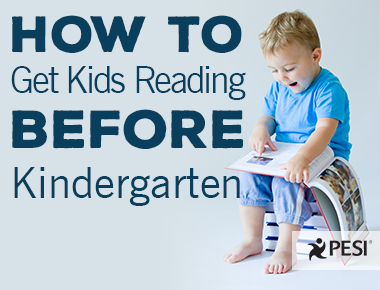How to Get Kids Reading Before Kindergarten
The "Kitten Chow" activity
Karen Thatcher, Ed.D., CCC-SLP

Did you know that a childŌĆÖs love of books and reading begins before they begin school?┬Ā
In fact, children can develop a love or hate relationship with reading before they even enter kindergarten.┬ĀChildren learn to love books and reading in the same way they learn to talk; by being immersed in it.┬ĀBy hearing the people around them use language every day, kids begin to see language as a means to achieving something.┬Ā
What can you do to ensure your child or client will want to engage in reading activities?┬ĀModel literacy everywhere!┬Ā
ItŌĆÖs easy to do! LetŌĆÖs explore some ways you can make simple everyday tasks a teachable momentŌĆ”
When a child sees a parent or other caregiver looking at a book, using a recipe to make a meal, making a shopping list, writing a thank-you note to someone, they begin to recognize the importance of literacy.┬ĀHere are some other simple ways to share reading with a child:
- Point out letters on cereal boxes and can labels while shopping or cooking.
- Write a letter or thank you card to family/friends and have the child "sign" his/her name with a crayon.
- Use a shopping list, and have the child cross off items when found.
- Keep books where the child can access them; the bedroom, bathtub, car, etc.
Need more ideas? In my new book, Fun with Literacy, I share 100s of exercises, tips, and activities for incorporating literacy. One of my favorite activities from the book is ŌĆ£.ŌĆØ
In this activity, youŌĆÖll want to use ingredients the child likes and can eat.┬ĀPossible ingredients include dry cereal, Goldfish┬« crackers, chocolate chips, small pretzels, etc.┬Ā
Begin by writing down your custom recipe and directions on this . Next, place each of the ingredients into separate bowls. Have the child systematically combine the ingredients into a large bowl. Cross off each item on the recipe card as you go. After all of the ingredients have been poured into the large bowl, have the child stir the ingredients together using a spoon. Finally, have the child use a clean cup to scoop out a serving for him or herself.
Using a Recipe ŌĆō ItŌĆÖs more than literacy!
LetŌĆÖs talk about some other developmental skills a child can learn from our recipe activity. Of course, we are encouraging reading and writing, but what about fine motor, social, cognition, sensory and oral language skills?
Fine Motor
Provide lots of opportunities for the child to pour the ingredients into the measuring cup and bowl, use a spoon and stir the ingredients together, and to "pick out" certain ingredients after it is mixed.┬ĀWhen a child is encouraged to pour, stir, and even use their fingers to "pick out" and feed himself/herself ingredients they are developing fine motor abilities of fingers and hands.┬Ā
Social
Eating is a very social activity.┬ĀThink about many of the social activities you have attended.┬ĀMost of these events will have food!┬ĀWhat social skills can be practiced while making and eating food?┬ĀIf itŌĆÖs just you and the child, take turns putting in the ingredients and stirring.┬ĀEven better, if you are working with a classroom allow different children to add the ingredients. When all the ingredients have been added and mixed, the child can learn about sharing by having them scoop some of the "kitten chow" into baggies to share with others.
Cognition
A lot of thought goes into following a recipe! Have the child count the number of ingredients on the recipe or even count individual ingredients as they add them (like pretzels!).┬ĀAsk the child to identify which measuring cup has "more" or "less." After the "kitten chow" is done, have the child try to remember all the items they put into the chow mix.┬Ā
Sensory
Part of the fun of eating can be the sensory experience.┬ĀThis is why young children "play" with their food.┬ĀAllow the child to crunch ingredients with fingers. While the child is eating the "kitten chow," talk about food being crunchy, salty, sweet, etc.┬Ā
Oral Language
Even when using a written recipe you can provide verbal directions to the child.┬ĀTell the child that "next we will measure," or "we need to stir now so find your spoon."┬ĀProvide labels (for example, cereal, bowl, spoon, spatula, measuring cup) for the ingredients and items being used to make the "kitten chow."┬ĀDescribe the actions (for example, stirring, pouring, dumping, mixing, and measuring) the child is completing during the activity.┬Ā
For more ideas and activities for incorporating literacy into your work, check out my new book, Fun with Literacy, and let me know what you think in the comments below!
Topic: Literacy


